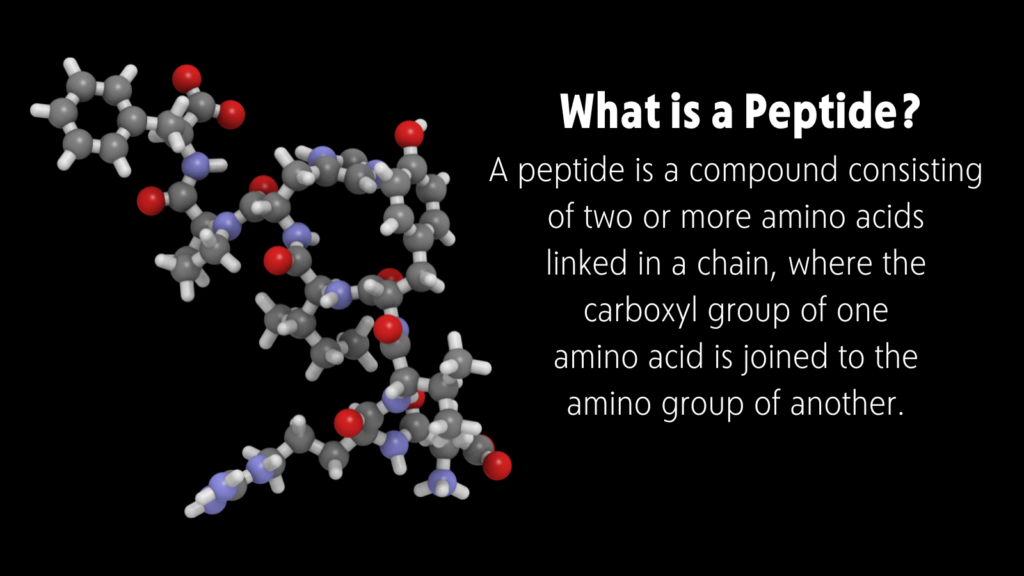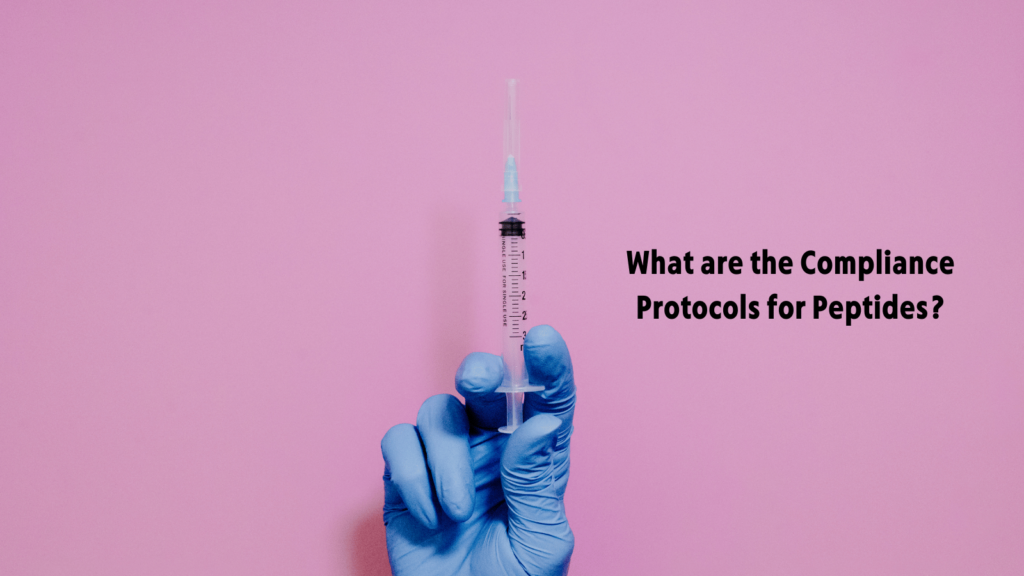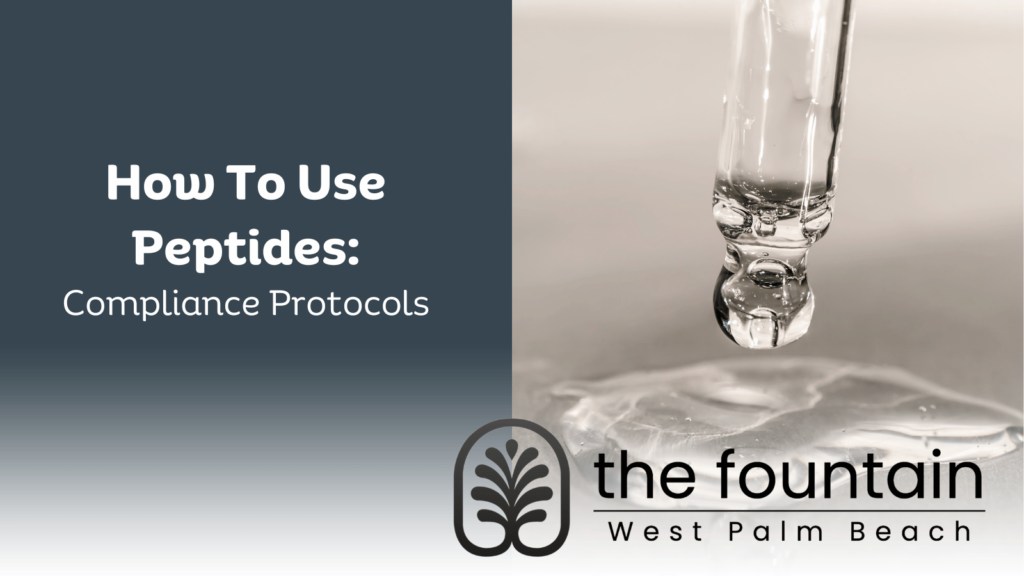In the rapidly evolving landscape of biomedical research and personal health optimization, peptides have emerged as a significant area of interest due to their versatile applications and potential benefits. These short chains of amino acids are fundamental to cellular functions, acting as the building blocks for proteins, and play crucial roles in various physiological processes, including healing, muscle growth, and hormonal regulation.
Understanding how to utilize peptides effectively and safely is paramount for individuals looking to enhance their health outcomes or for professionals integrating these compounds into therapeutic protocols. By adhering to established guidelines and regulatory frameworks, one can maximize the therapeutic benefits of peptides while minimizing potential risks, thus unlocking their full potential in a responsible and effective manner.

What is a Peptide?
A peptide is a compound consisting of two or more amino acids linked in a chain, where the carboxyl group of one amino acid is joined to the amino group of another. They are essentially small proteins, or fragments of proteins, but the distinction often lies in size; peptides typically contain 50 or fewer amino acids, whereas proteins are made up of more than 50 amino acids. The specific sequence of amino acids determines the peptide’s unique structure and function.
What are Peptides Used For?
Peptides play a crucial role in numerous biological processes and have a wide range of uses both in the human body and in medical applications:
- Biological Functions:
- Hormonal Regulation: Many hormones are peptides, including insulin, which regulates blood sugar, and growth hormone, which supports growth and metabolism.
- Immune Response: Some peptides have antimicrobial properties or can modulate the immune system, helping the body fight off infections or diseases.
- Neurotransmitter Activity: Peptides can act as neurotransmitters or their modulators, influencing various neural processes and mood regulation.
- Cell Signaling: Peptides can function as signaling molecules, facilitating communication between cells to regulate processes like cell growth, differentiation, and death.
- Medical and Therapeutic Applications:
- Drug Development: Many medications are peptides or based on peptide structures, used in treating a variety of conditions such as diabetes (e.g., insulin therapy), cancer, and osteoporosis.
- Diagnostics: Peptides are used in diagnostic assays and imaging to identify or monitor disease states.
- Cosmetics and Anti-aging: Peptides are popular in skincare products for their potential to promote collagen production, enhance skin elasticity, and reduce the appearance of wrinkles.
- Performance Enhancement and Muscle Growth: Some peptides are used (often controversially and not always legally) to enhance athletic performance, stimulate muscle growth, or accelerate recovery from injuries.
- Research Tools:
- In scientific research, peptides are used to study protein functions, identify interaction sites, or understand disease mechanisms.
How to Use Peptides Safely
Using peptides effectively and safely requires a comprehensive approach that considers the type of peptide, its intended use, dosage, administration method, and adherence to legal and medical guidelines. Here’s a general overview of how to use peptides:
1. Consultation with Healthcare Professionals
- Medical Evaluation: Before starting any peptide regimen, it’s crucial to consult with a healthcare professional. This ensures that the use of peptides is appropriate for your specific health condition or goals.
- Prescription: Many peptides require a prescription, especially those used for therapeutic purposes. A healthcare provider can prescribe the right peptide and dosage for your needs.
2. Understanding the Purpose
- Therapeutic Uses: Peptide Therapy is used to treat certain medical conditions like hormone deficiencies, skin disorders, or muscle-wasting diseases, peptides must be used according to a doctor’s instructions.
- Research and Development: In scientific research, peptides are used under strict experimental protocols.
- Cosmetic Applications: For anti-aging or skin care, peptides are often found in creams or serums and should be used as directed on the product label. An emerging therapy for anti aging is NAD+ Peptide Therapy.
3. Administration Methods
- Injection: Many peptides are administered through subcutaneous (under the skin) or intramuscular injections for better bioavailability. Proper technique and hygiene are essential to avoid infections.
- Topical: Some peptides are formulated in creams or serums for skin application. These are used for cosmetic purposes, like reducing wrinkles or improving skin elasticity.
- Oral: A few peptides are available in oral form, but this is less common due to digestion affecting their bioavailability and effectiveness.
4. Dosage and Timing
- Follow Guidelines: Dosage and frequency should be strictly followed as per the healthcare provider’s advice or product instructions.
- Consistency: Regular and consistent use as prescribed is important for achieving the desired effects.
5. Monitoring and Side Effects
- Observe Changes: Monitoring the body’s response to the peptide is crucial. This helps in adjusting dosages if necessary and in identifying any adverse effects early.
- Report Side Effects: Any side effects should be reported to a healthcare provider immediately. Peptides can cause various reactions, from minor injection site irritation to more significant hormonal imbalances.

What are the Compliance Protocols for Peptides?
Compliance protocols for peptides are a set of guidelines and standards designed to ensure the safe, ethical, and effective use of peptides in various contexts, including medical treatment, research, and cosmetics. These protocols encompass legal regulations, quality assurance, ethical considerations, and patient safety measures. They are important for protecting individuals from potential harms and ensuring that peptide use aligns with medical standards and legal requirements. The specific protocols can vary by country and purpose of use, but key aspects include:
Legal and Regulatory Compliance
- Prescription Requirements: Many peptides must be prescribed by a licensed healthcare provider. Unauthorized use or distribution can lead to legal consequences.
- FDA Approval: In many countries, peptides intended for therapeutic use must be approved by regulatory bodies like the U.S. Food and Drug Administration (FDA) or equivalent entities in other countries.
- Doping Regulations: Athletes must comply with anti-doping regulations, as certain peptides are banned in competitive sports.
Quality Control and Manufacturing Standards
- Purity and Composition: Peptides should be produced according to high manufacturing standards, ensuring purity and correct amino acid composition. This often involves third-party testing and certification.
- Storage and Handling: Proper storage and handling protocols must be followed to maintain peptide efficacy and minimize degradation or contamination.
Ethical Considerations
- Informed Consent: Patients or subjects must be fully informed about the benefits, risks, and nature of the peptide treatment or research study.
- Non-Exploitation: Peptides should not be used in ways that exploit individuals or groups, particularly in vulnerable populations.
Research and Clinical Trials
- Ethical Approval: Research involving peptides must receive approval from ethical review boards or institutional review committees.
- Data Integrity: Researchers must ensure the integrity of data collected in clinical trials, following established protocols for data management and reporting.
Professional Training and Education
- Healthcare Provider Knowledge: Providers prescribing peptides should have adequate training and knowledge about peptide therapies, including potential interactions with other medications or conditions.
Compliance with these protocols is essential for the responsible use of peptides, ensuring that their potential benefits are realized while minimizing risks to individuals and communities.
How Do Peptides Differ from Proteins?
The main difference between peptides and proteins is size. Peptides typically consist of 50 or fewer amino acids, while proteins are larger molecules composed of one or more peptide chains of more than 50 amino acids.
What Are the Therapeutic Uses of Peptides?
Peptides have a wide range of therapeutic uses, including as hormones (e.g., insulin), antibiotics, and agents for cancer therapy, skin repair, and anti-aging. They can also promote muscle growth and recovery in medical and athletic contexts.
Can Peptides Be Used for Weight Loss?
Some peptides are associated with weight loss because they can influence metabolism, reduce appetite, or increase fat breakdown. However, their use for this purpose should be supervised by a healthcare professional to ensure safety and effectiveness. For example tesamorelin peptide therapy is widely recognized for its effectiveness in reducing abdominal fat, utilizing a synthetic form of growth-hormone-releasing hormone to target and decrease visceral adipose tissue.
Are Peptides Legal?
The legality of peptides depends on their intended use, the jurisdiction, and whether they are prescribed by a healthcare provider. While many peptides are legally used for research and therapeutic applications, the unauthorized use of certain peptides, especially for performance enhancement, may be illegal or banned in sports.
Are Peptides Found in Food?
Yes, peptides are naturally found in foods, particularly those rich in protein like meat, fish, beans, and dairy products. Dietary peptides can have health benefits, including antimicrobial properties, immune modulation, and promoting heart health.





